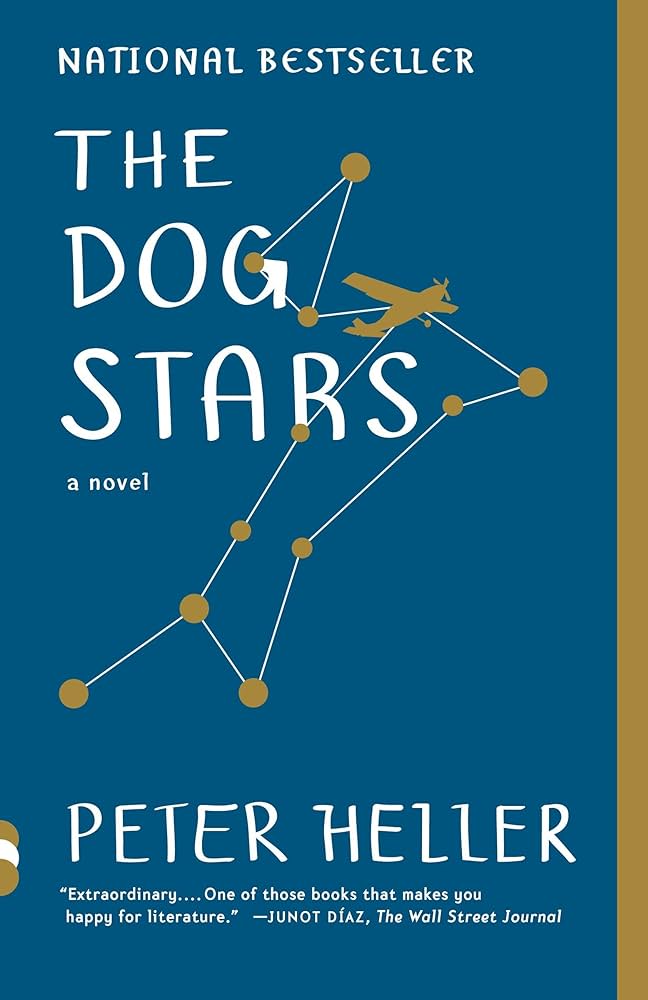Peter Heller’s The Dog Stars (2012) was well received by critics and shortlisted for the Arthur C. Clarke Award in 2013 (alongside Kim Stanley Robinson’s 2312). The novel plays out in a depleted future reminiscent of Cormac McCarthy’s The Road (2006) and Marcel Theroux’s Far North (2009). Ecology is failing due to climate change, a plague (engineered in a lab, the reader eventually learns) has wiped out most humans, and civilization (as the American reader knows it) is entirely lost. As in much other dystopian climate fiction from the Global North, there is little to eat in this future. With the existing food system permanently defunct, the only way for people to find things to eat is to scavenge the ruins for preserves and cans of soda, to hunt what wildlife remains, or to consume other people. As in The Road, this forces people to move across the land in search of food. Because the social contract that modernity has supposedly established is gone, people doing so traverse a Hobbesian wilderness where people are either predators or prey.
However, The Dog Stars departs from The Road and Far North by not being a road narrative. The two main characters are not nomadic but stationary, holed up on a small airfield somewhere in Colorado. The two are Hig, the novel’s first-person narrator, and Bangley, a gun nut who arrived at the airfield one day loaded with rifles and ammunition. After arriving, Bangley established a parameter around the airfield, and, since then, the two men have shot and killed anyone purposely or accidentally entering this space. In the opening of the novel, four men (with sinister intentions) and a boy who is perhaps nine years old are moved down by the couple. Hig turns the bodies of the grown-ups to jerky that he feeds Jasper (the dog’s favourite food, we are told), but he buries the boy in one piece.
The Dog Stars is excessively bleak. It gestures clearly and loudly in the same direction as McCarthy’s novel, yet it tells a very different story. While the boy of The Road is constantly told that he and his father are “the good guys” and “keepers of the flame” in a world that ultimately cannot accommodate either goodness or keepers, Hig and Bangley are, in fact, both keepers of a flame and the good guys. Bangley’s prepper mentality and indiscriminate violence are ultimately protective and Hig is able to remain good even in this depleted future. The novel eventually rewards him for his goodness. During an expedition in a small propeller airplane, he comes across another micro settlement; a (ex-soldier) father and his beautiful daughter Cima. After some initial communication problems (the father has also created a parameter and tries to kill Hig as he approaches), they get along and the couple joins Hig and Bangley at the airfield. There is hope and somehow also all the food they need. The father and daughter have kept animals and two lambs accompany the group back to the airfield.
The reader leaves Hig and Cima sleeping underneath the stars, watched over by their armed companions. Hig and Cima are making up new constellations out of the bright stars that surround them. Hig’s constellations are of animals, but Cima’s are all about food: “Sourdough Pancake with Syrup, the Soft Shell Crab au Gratin”. In this way, The Dog Starspiles on dystopian imagery but still creates a space of sustainable, snug comfort. The future may be completely fucked, but if you can hook up with a gun nut and an ex-Navy Seal, it may not be so bad after all. In this way, The Dog Stars eats its climate fiction cookie, but it also holds on to it in the sense that it refuses to look the post-capitalist, post-apocalypse in its eye. For well-armed men, that dark gaze can be averted onto other people. Indeed, well-armed men, rather than the climate, are the apocalypse in this novel, but unlike in The Road or Far North, we are instructed to love them for their capacity to wield indiscriminate violence. It is this that puts food on the table in this depleted future and allows young women to dream of shellfish delicacies under the stars.


Pingback: How is climate fiction about food? – FoodImagine